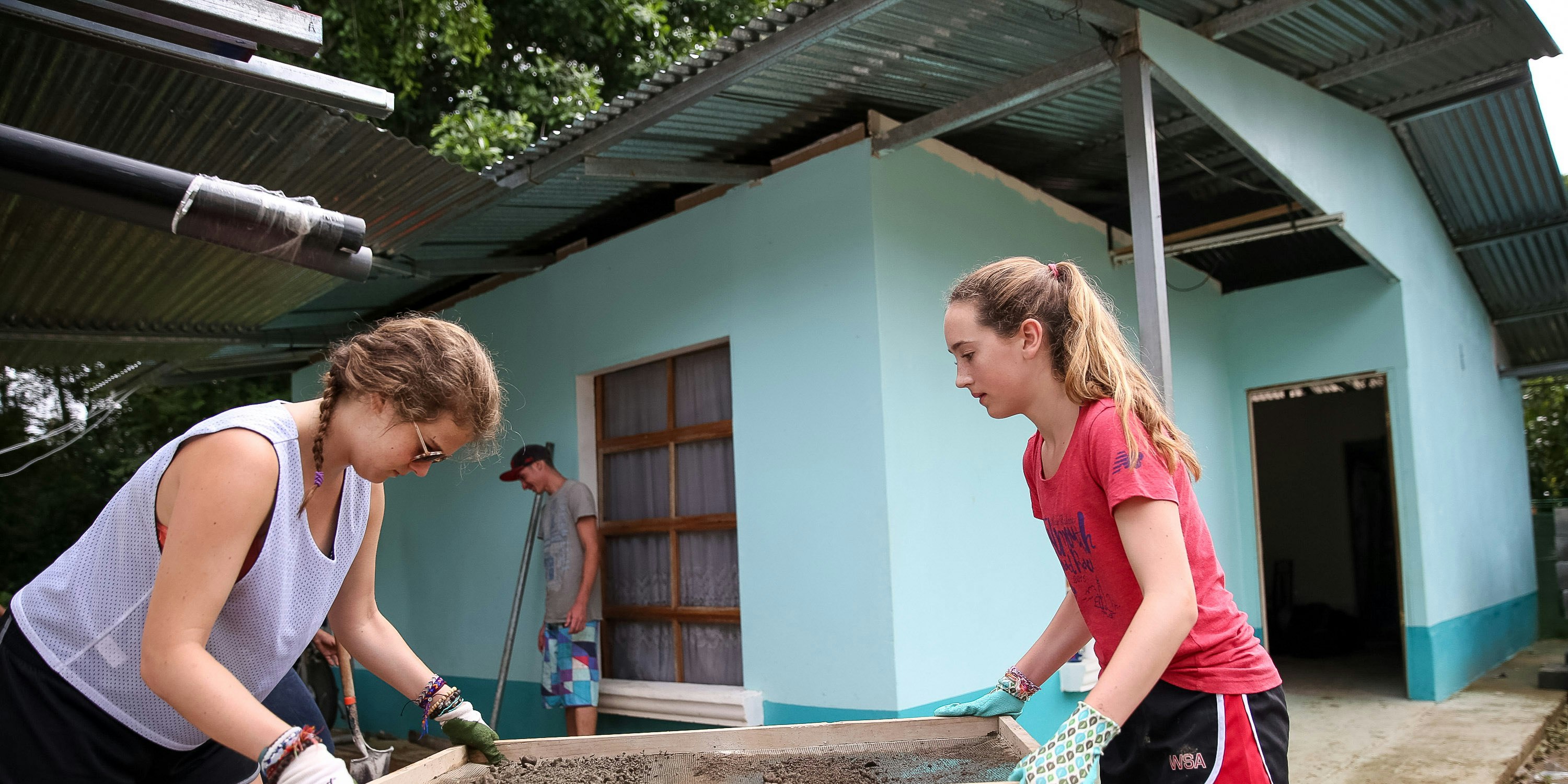- Author:
- Mary Rogelstad
- Published:
- April 8, 2022
- Favorites:
- Tagged In:
- Costa Rica
The Osa Peninsula in southern Costa Rica is considered one of the most biodiverse locations on the planet. The region contains 5% of the world’s biodiversity, has seventeen protected reserves, and an amazing array of flora and fauna. This has made the area a focal point of both governmental and nonprofit organizations that work together to protect its resources and help local residents.
The Rustic Pathways Foundation is one of those organizations. Its Heart of the Jungle program is based in this region, allowing students to provide service for projects that are also supported by Costa Rican nonprofits, California’s Stanford University, and the United States government.

The Osa Peninsula is one of the world’s most biodiverse regions.
The Stanford Woods Institute for the Environment began collaborative efforts to work in this area of Costa Rica in 2012. Initiatives grew after former U.S. President Barack Obama visited the nation in 2013. Questions were raised then about the effectiveness of higher education in the nation.
From that conversation, new projects were discussed in towns like Puerto Jimenez where Rustic students provide service. Local officials were finding that young people who went to the capital of San Jose for a higher level education were not returning. They wanted more local opportunities. This is when new ideas were formulated.
New Programs Allow Rustic Teens to Help Costa Ricans
Educational programs on the Osa Peninsula were launched to teach Costa Rican students about eco-tourism and conservation. The lessons also foster leadership skills and basic English proficiency. In the last few years, Rustic students have worked on a number of infrastructure projects to help make these programs possible.
Alumna Cora Nicolaisen treasured these service opportunities when she traveled on the Heart of the Jungle program in the summer of 2021. The students worked on projects in the towns of Uvita and Puerto Jimenez where service work will be held again this upcoming summer.

Work on infrastructure projects designed to make a lasting impact.
Photo: Rustic Pathways
In Uvita they built a ramp for accessibility and painted walls at a community center where local students are taught English and where community members come to sell produce and other products. This market was crucial during the pandemic.
Later in Puerto Jimenez, they worked on a library – building a wall, painting, and tending to a garden. At this site, Nicolaison said they had more interaction with the local residents.
“It was amazing to see how grateful the locals were and how welcoming they were,” Nicolaison said. “I have never been in a community, in which I was not from, that was so welcoming. They brought us into their life and culture. By far this was the most important aspect of the trip to me.”
The Rustic students are often broken up into smaller groups to complete different tasks. This ensures the students are all busy and not just observing. Another project completed this past summer was a sidewalk in front of the community center.
“The community service aspect of the trip was one of the highlights,” alumna Olivia Venneman said. “I worked with a group of people to efficiently hand mix 36 wheelbarrows of concrete while jamming out to rock music in the rain.”
Families in these areas only tend to make about $400-$500 a month and much of that income comes from tourism. Therefore, having visitors is important to them, but so are these community infrastructure projects. They need these gathering places so they have somewhere to sell wares. They also are often looking for better economic futures for their children through these educational opportunities.
In addition to the classes taught, the local kids also come to the center to use the computers since they don’t normally have internet at home. The local students lost many school hours not only because of the pandemic but also because of a teacher strike in 2019.
In the future, another goal is to start a prevention center with therapists to offer support. Likewise, there are plans to provide more recreational opportunities. Rustic students will also help with this goal this upcoming summer.
They’ll work on a skatepark and bathrooms in Uvita, along with doing some work on a local ranch. Country Director Wainer Ocampo says this site has two buildings. One is a youth center with offices and classroom space for workshops. The other is an open facility with a roof that can be used for recreation, like various sports games. In between them will be the skate park.
All the sites are multi-purposed to fit the needs of the community. This helps both the local residents and the surrounding flora and fauna as community members learn environmentally-friendly ways to thrive.
Below is a look at some of the locations where Rustic students in the Heart of the Jungle program will work this coming summer. For more information about service projects for the Pura Vida and Surf and Service programs in Costa Rica, please view our article here.
For more information on the Heart of the Jungle program, please visit our program page.
Mary Rogelstad
Lead Editor
Mary is the Lead Editor at Rustic Pathways. She has been a writer and editor for nearly 20 years. Prior to covering student travel, Mary created content for the music education company J.W. Pepper & Son. She also was a writer and producer at CNN International and a communications director for a social service agency and a K-12 private school.
